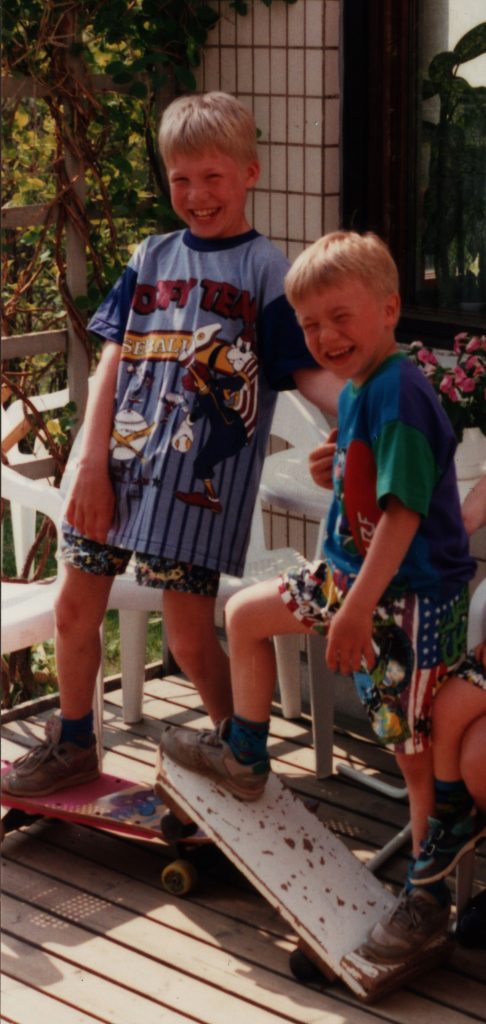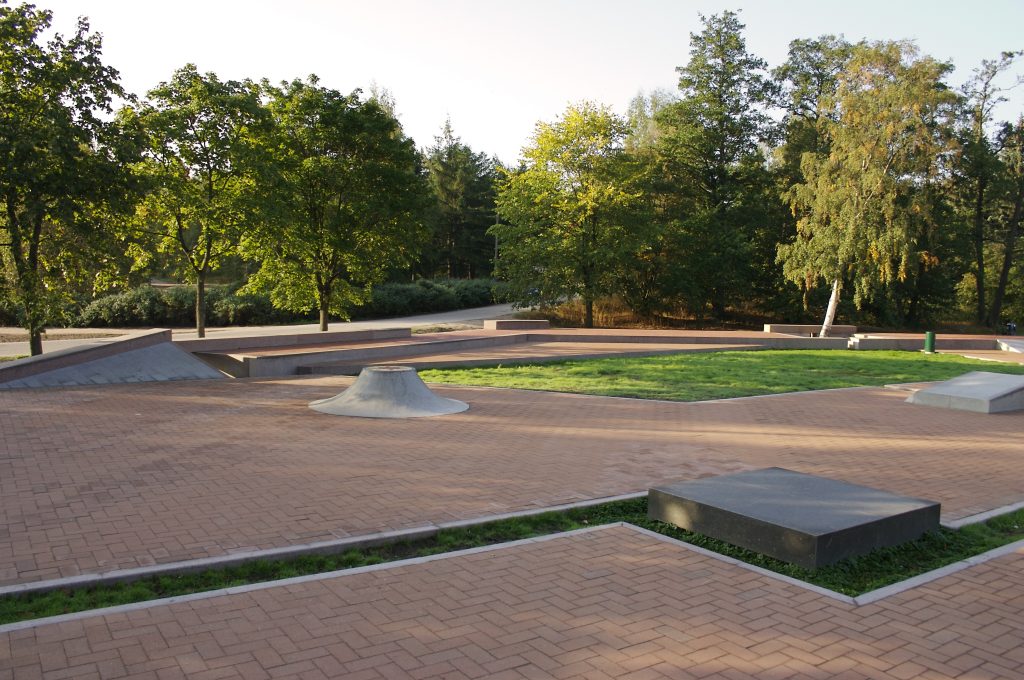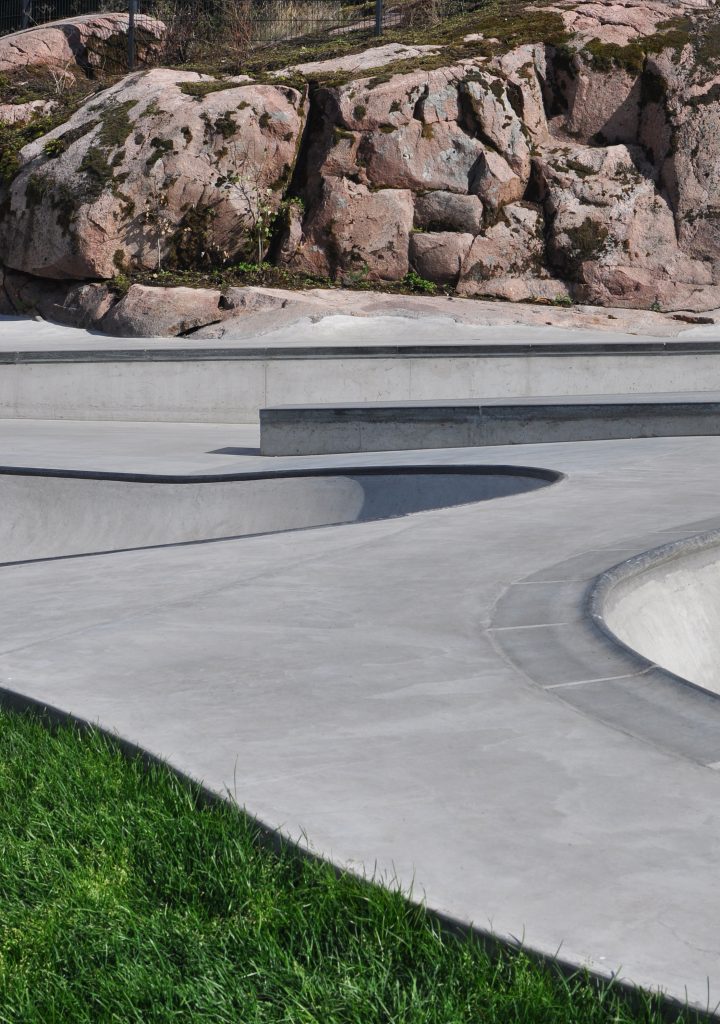← Back
Janne Saario, Landscape Architect
Interview, 11 November 2016
Finnish skateboarder-turned-landscape architect Janne Saario has spent the past decade designing skate parks. Putting great effort in recreating urban environments into carefully designed spaces that allow the local youth to fully express themselves – whilst staying out of trouble.
In Finland during the 1980’s, in the midst of an economic boom, there was a huge influx of American culture and skateboarding was suddenly the main hobby for many kids in urban areas.
A young boy, Janne Saario, was one of them. At first, he had to settle for a piece of chipboard with office chair wheels, assembled by his father, before his parents finally recognized his dedication and got him his first board.
Growing up and honing his craft in the northern Helsinki-suburb of Torpparinmäki, the concrete fundaments, pavements and garages in the city center later became his home turf. This was where Saario adopted his fascination for landscape architecture that would soon take up most of his time.
He quickly rose through the ranks in the local skateboarding community and was eventually seen as one of the more technically gifted skaters in Helsinki. One day, while riding in a schoolyard with friends, he was discovered and signed to a local skate-team. A few years later, he became a member of the legendary skate brand Element’s roster and was paid to travel the world and skate in various cities. But it was while riding through the mecca of architecture – Barcelona – that he truly learnt to appreciate urban landscaping. He decided to enroll in architecture school upon his return to Finland.
In 2005, the city of Helsinki had decided to create its very first official skate park, and via a friend who knew of Saario’s design skills and deep knowledge of skateboarding, he was commissioned to design the entire park. The result was the now famous Micropolis skate park, and Saario has since then designed over 30 parks all over Northern Europe.
Now 33 and a father of two, the calling to design spaces where youth can flourish is greater than ever for Janne Saario. We travelled to his one-man-workshop in northern Helsinki to hear more about his career as a skateboard pro, his eye for design and how the cost of one single skate park can save the city a lot of money in the long run.
– Please tell us about your early days of skateboarding?
– I started when I was 6 years old. It was a phenomenon that had just come to our neighborhood, this was around 1989 and all the kids would start getting skateboards. It took me a while to get a board of my own because my parents were kind of skeptical about the sport. Our neighborhood was all right but they still needed to think about where they put their money, I guess they suspected skateboarding was a trend that would eventually fade away.
But I kept asking for my own board and one day my father built one for me. It was like a thick piece of chipboard where he had attached four office chair wheels.
– Sounds dangerous…
– Haha, yeah the wheels were rolling in every direction so it was basically impossible to skate on. But I was determined to master it and after some time my parents saw that I was motivated and got me my own, real, skateboard. The rest is history and I’ve been skating with my friends ever since.

– How did you become a professional?
– By the time I was about 16 there was a really nice schoolyard in the northern parts of Helsinki with beautiful curbs, rails and structures that really catered to skaters. After a while, sponsored skate teams would come and film at that very schoolyard. Since we had skated that place for quite some time, way before it got known to other skaters, we were ripping it up and impressed the right people. This one guy, who was somewhat of the Godfather of skateboarding in Finland, came by and said he was setting up a team for a skate shop, and he asked if I wanted to join them. That was kind of how the whole sponsorship thing started. A few years later on I signed with bigger sponsors like DVS and Element Europe.
– What was it like for an 18 year old kid to be sent around the world, doing what he loved the most?
– Amazing, almost like a fairytale. I remember riding a board until it would virtually crack and not knowing how to get my hands on a new one. Now suddenly, a DHL truck would come by my house every other month, delivering a stack of new boards and all this other equipment. I didn’t have to worry any more. The traveling also allowed me to experience architecture around the world and see what the conditions for skateboarding were in various places. That was what really got me inspired to start studying landscape architecture.

“The travelling allowed me to experience architecture around the world and see what the conditions for skateboarding were in various places.”
At what point did you realize you had an eye for design?
– I used to take all the art courses in high school and my teachers would urge me to pursue architecture as a career. Later on I would apply to architecture school and it took me like four tries before I was accepted. Every year there would be four days of tests, with drawing and stuff and I was getting rejected. I still had my skateboarding career on the side so I wasn’t too bummed about it. I kept skating and kept applying and eventually I was accepted.
– Do you think that spending all that time cruising around urban areas, in search of spots to skate, opened your eyes to landscape architecture?
– Most definitely. In Helsinki there were a bunch of spots that people knew about – but at the same time there were so many places to be discovered. It was almost like a treasure hunt to find secret locations that would be ideal for riding. When we were traveling the world, the local skaters would show us around town to visit the best spots. But when the other guys were sleeping late, I would always get up early and cruise around the city looking for hidden gems. I was also looking at the city’s architecture and tried to soak in as much as I possibly could.

– What was your favorite city to do that sort of scouting in?
– Athens was really cool to do that sort of thing. I would climb up the hillsides and find great places to skate. That’s one great city, but all the ones in Spain would always blow me away as well.
– How did you come to design your very first skate park?
– It was in 2005 when the city of Helsinki came up with an idea to create its first proper skate park. The city officials were talking about using pre fabricated skate elements such as concrete ramps, which were all crap to be perfectly honest. There was one skater who worked for the youth association and he was in all of those meetings and knew about my background and asked if I could come up with some sketches. It turned out that city officials loved the ideas and they simply asked me to design the whole park, which came as a surprise.
I accepted their offer and asked what I needed to do and they told me to set up my own company and learn specific computer software’s. I was still applying for school at this point so I had a lot of time to set my company up and learn the basics.
– So when I finally finished that park, which is called Micropolis, it quickly became sort of a landmark for skateboarding in Helsinki. It was unique in many ways so I started getting offers from for example Sweden to create more parks.

– You designed one in the northern Swedish city of Luleå, which was very special, can you tell us a little about that one?
– Yeah, that was an awesome project. It was different because the local skaters had a big say in what they wanted and they got to choose the designer and everything else. The city basically gave them free hands to complete the project. They had seen my Micropolis park and decided I was the man for the job. I flew over and we went through the history of the city, which is largely based on the local steel industry. The big steel factory in Luleå is bringing a lot of jobs and is very much the soul of the city. The factory was right next to the park so I incorporated a lot of factory parts into the design and made the design follow the identity of the area.
– Do you communicate with the local skaters before making a park to get a feel for what kind of skating they are in to?
– Very much so, the local skaters needs is really the key factor when deciding on what to bring in. It is the local needs that play the major part in the design process, so I listen to their requests and see how I can create an original identity for the park. The environment is also very important; I always pay close attention to the surrounding landscape. The third thing is adapting to the budget to see what is possible to pull off.
“The cost of one single park is the same as for one kid falling out of society so I feel it’s a sound investment.”
– What do you think skate parks can do for the youth and for preventing criminal behavior?
– Before I think teenagers would gather in whatever places they could find to socialize and test their limits, like schoolyards and the forest or wherever else. Now with the skate parks, they have a natural habitat to be in where they can focus on their hobby and create a positive space for blending in with other kids. Skateboarding is a sport, or lifestyle, where nobody is telling you what to do and there are no coaches. I think it resonates very well with certain young people because they are allowed to feel completely free. If you take that away from them they could end up engaging in anti-social activities. The cost of one single park is the same as for one kid falling out of society so I feel it’s a sound investment.
– Is there any place in particular where you dream of creating a park?
– I think that would have to be Tokyo, or wherever in Japan for that matter. I’ve been there twice and I really fell in love with the place, so that would be cool.

– What type of architecture do you see yourself merging into in the coming years?
– I graduated from school around three years ago. It took me seven years to complete because I was always working on other projects on the side. I hope I can develop my craft as time goes by. I’m very passionate about wooden buildings; I’m actually building my own sauna at the moment. I like traditional building methods and I think it’s a nice break from all this concrete stuff I’ve been working on for so many years. I always try to incorporate natural materials like grass and trees into my parks as well, it’s important for the minds of the visitors. It gives it a more pleasant and tranquil feeling of being in the parks.
For more please visit:
www.jannesaario.com & Instagram: @jannesaario_design